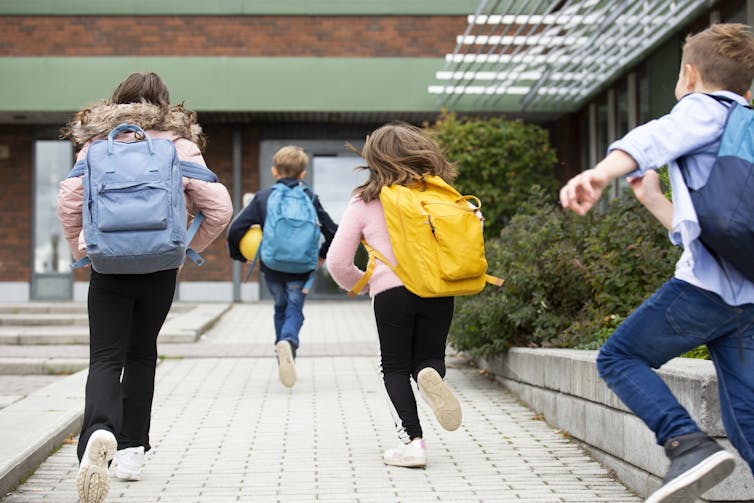
The claim last week by National Party leader Christopher Luxon that 100,000 New Zealand schoolchildren were chronically truant quickly turned into an argument about terminology, statistics and how to interpret them.
In fact, it appears Luxon was referring to a figure from term one this year that showed 101,861 children were “chronically absent”. This means they miss 70% or more half-days of school, but is not the same as being truant.
The wider political context of the debate was the current concern over youth crime and attendance levels in general. While truancy and chronic absenteeism are an obvious focus, there is another problem that deserves just as much attention: transience.
This refers to the frequent movement of students from one school to another. It’s linked to poverty and is typically driven by changes in family or employment circumstances, or by changes in housing availability.
Often overlooked in discussions of transience, however, is the impact it has on the school environment – and particularly on those students who are not transient themselves.
The impact of transience
The development of positive social relationships and social skills during childhood increases the likelihood of positive outcomes later in life. Schools provide opportunities for students to form bonds with peers and, through these relationships, build important social and emotional skills.
But a school’s ability to nurture social skills and relationships can be undermined by external factors such as poverty, which is linked to increased transience.
According to the Ministry of Education, children are considered transient if they attend two or more schools in a single school year. Over their eight years of primary school, some children change schools as often as ten times.
Although transience has been declining since 2016, transience rates are almost six times higher at low decile schools than high decile schools. Sadly, compared to other OECD countries, Aotearoa New Zealand has one of the highest rates of residential mobility among families of school children.
Children who move schools frequently can experience peer rejection, bullying, mental health problems, and, in some cases, demonstrate antisocial behaviour. Transience can also affect the school environment by disrupting or unsettling established classroom routines.
Children who attend highly transient schools are affected by the constant flux of peers moving in or out of the school community, which erodes social networks, social skill development and classroom climate.
Measuring the impact of transience
School programmes designed to build the social skills needed to mitigate the negative impact of transience have been shown to work. But less is known about the effect on students who attend schools with high transience rates, but who are not transient themselves.
Our research explored the impact of Kiwi Can, a values and life skills programme operated by the Graeme Dingle Foundation charity, on the classroom climate and social health of children.
The programme teaches positive relationships, integrity, resilience and respect. The curriculum is standardised, but can be tailored to the needs of the school. One Kiwi Can lesson is delivered each week to each class over the course of the school year.
Read more: Why student absences aren't the real problem in America's 'attendance crisis'
We used a student questionnaire about positive relationships and classroom climate in 15 Kiwi Can schools (763 students) and nine control schools (456 students) at the start and end of an academic school year.
Seven Kiwi Can schools were classified as “new” because they had been in the programme for less than two years. The eight that had been in the programme for two or more years were classified as “experienced”.
We calculated the rate of transience for all schools using the number of students who completed both surveys as a proportion of the school roll. Rates were classified as “high” if the transience level was equal to or greater than 33%, “middle” between 32% and 15%, and “low” if under 15%.

Helping non-transient pupils
In our sample, five Kiwi Can schools were classified as having high transience rates. Of these, three were classified as experienced.
We found non-transient children attending highly transient schools struggle to forge healthy social relationships, feel connected to their peers or schools, behave in prosocial ways, and show caring and compassion for others.
Read more: Truancy: parents who take children on holiday during term time not the problem
They also seemed to feel less safe in their schools and enjoyed their schooling experience less than those in more stable (less transient) school environments.
While all schools reported lower scores against all these measures by the end of the year, this was greatest in schools with the highest rates of transience and the shortest experience of Kiwi Can. High transience schools that had longer experience with Kiwi Can had end-of-year results similar to those in middle transience schools.
Importantly, sustained participation in the Kiwi Can programme was found to mitigate the negative effects of transience for non-transient children. In fact, children who attended experienced Kiwi Can schools showed fewer declines in their social health over the course of the school year than children who attended new Kiwi Can schools in highly transient communities.
Read more: Teacher shortages are a global problem – 'prioritising' Australian visas won't solve ours
More support for schools
This work draws much needed attention to the complexities of transience, which affects not only children who move frequently, but also those who do not.
Although we are all aware of the impact of poverty and should be working towards a long-term solution, we must also do what we can now to mitigate the negative impact of transience on the health and wellbeing of our tamariki (children).
Transience negatively affects children who don’t move a lot, but this can be mitigated through positive youth development programmes.
Long term investment is needed to support whole school programmes that nurture social skills and help children feel more connected to school. But schools must be funded to deliver these programmes consistently if we are to support the needs of those “left behind”.
The authors do not work for, consult, own shares in or receive funding from any company or organisation that would benefit from this article, and have disclosed no relevant affiliations beyond their academic appointment.
This article was originally published on The Conversation. Read the original article.







